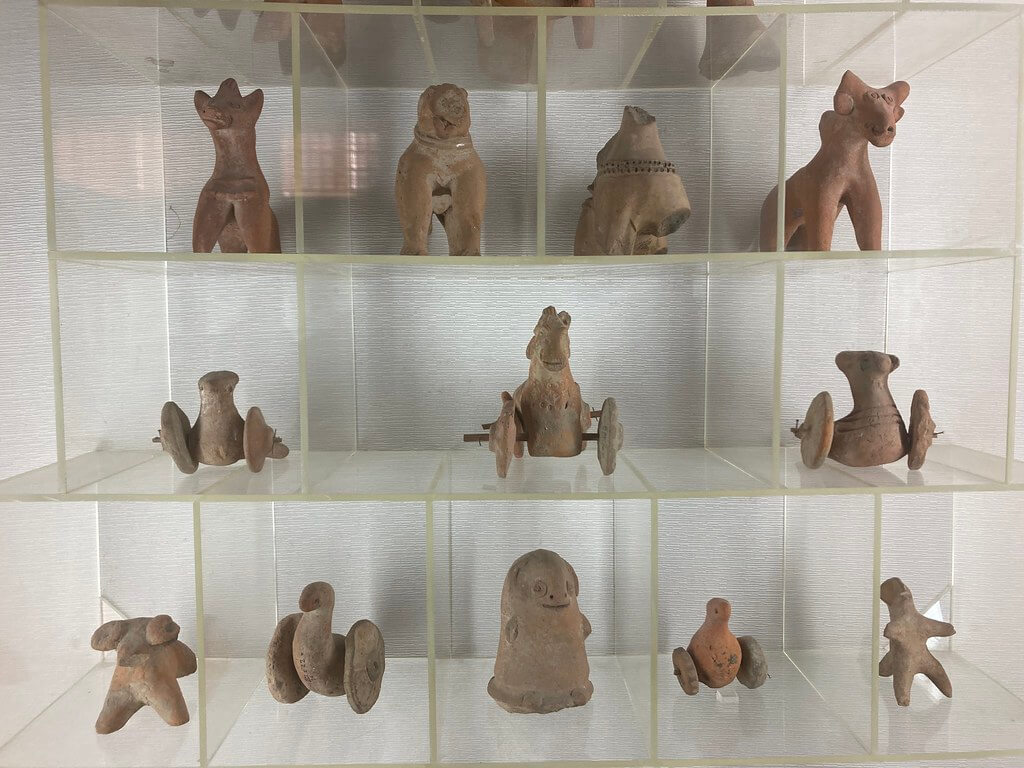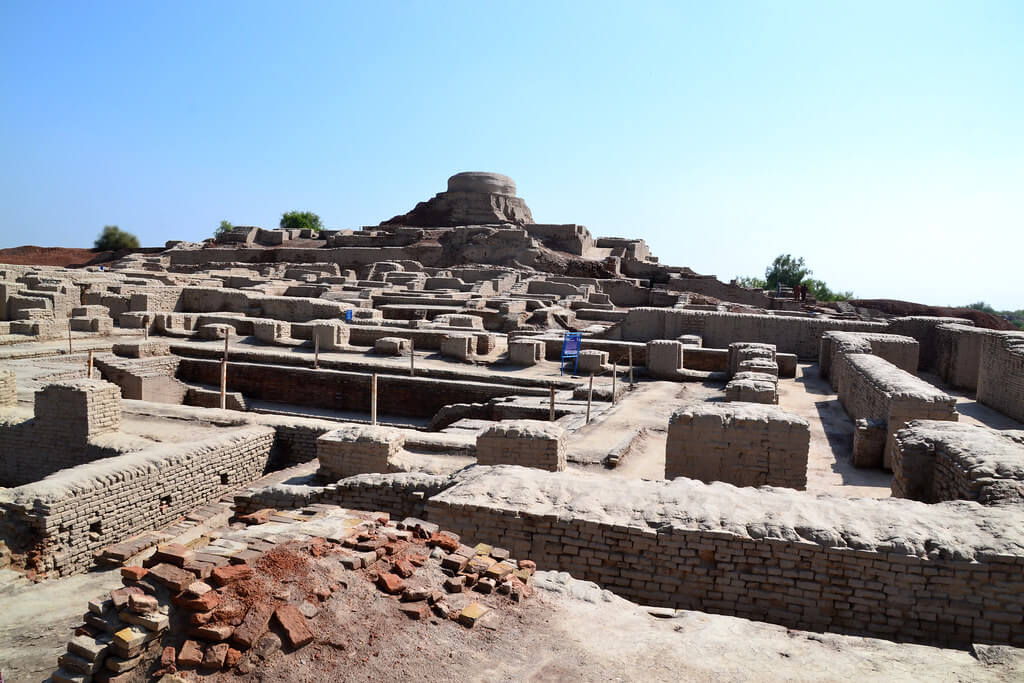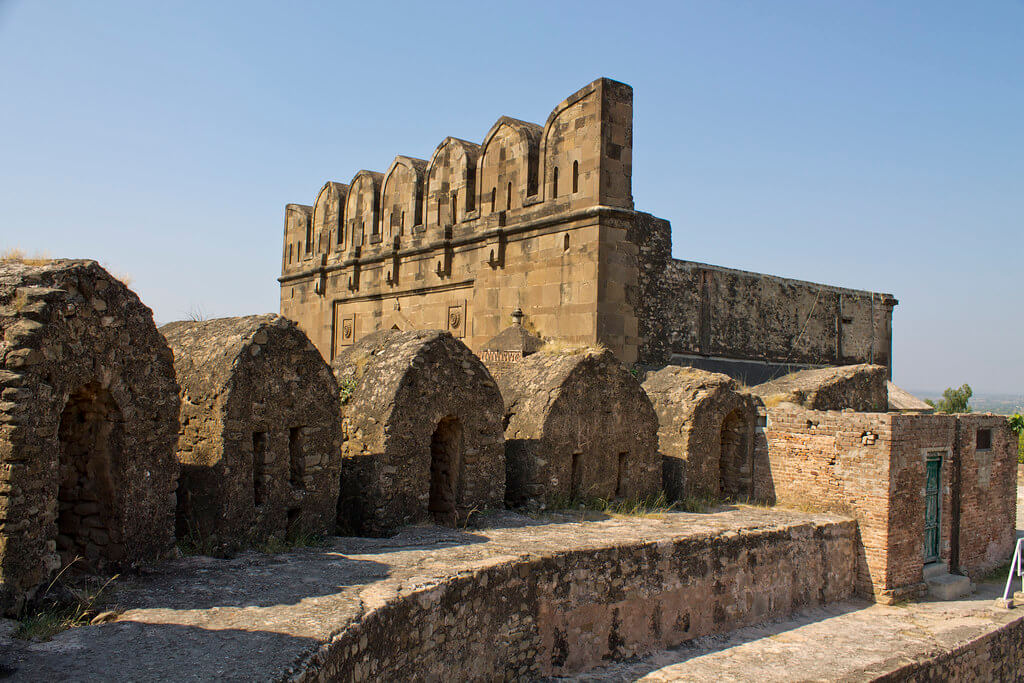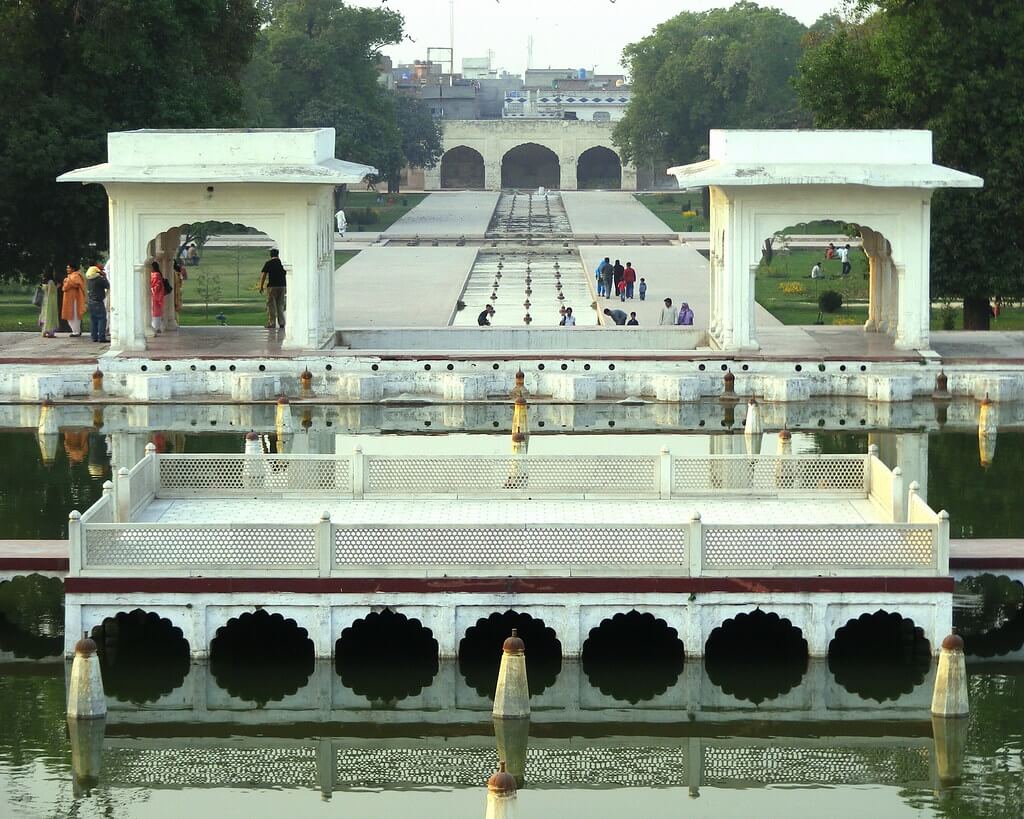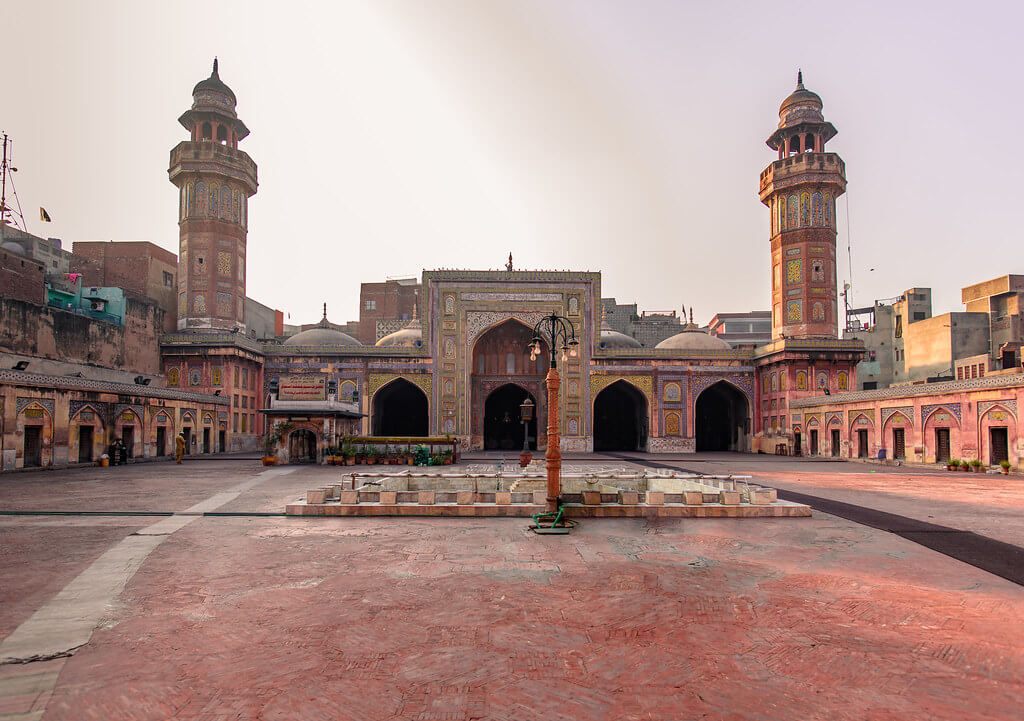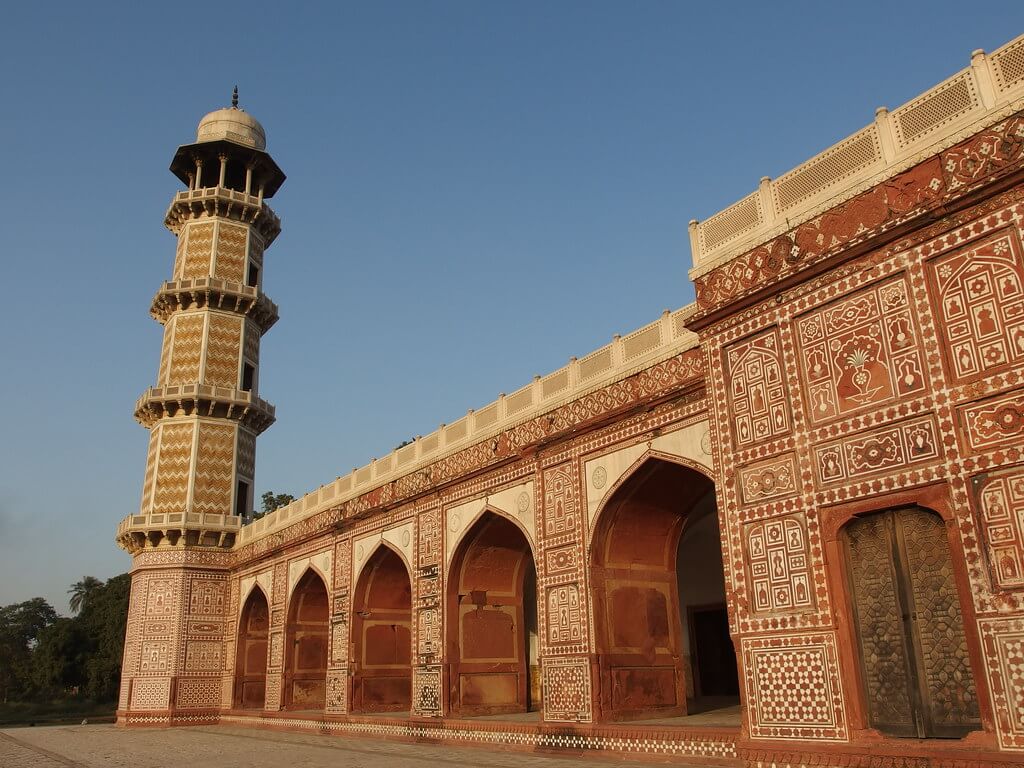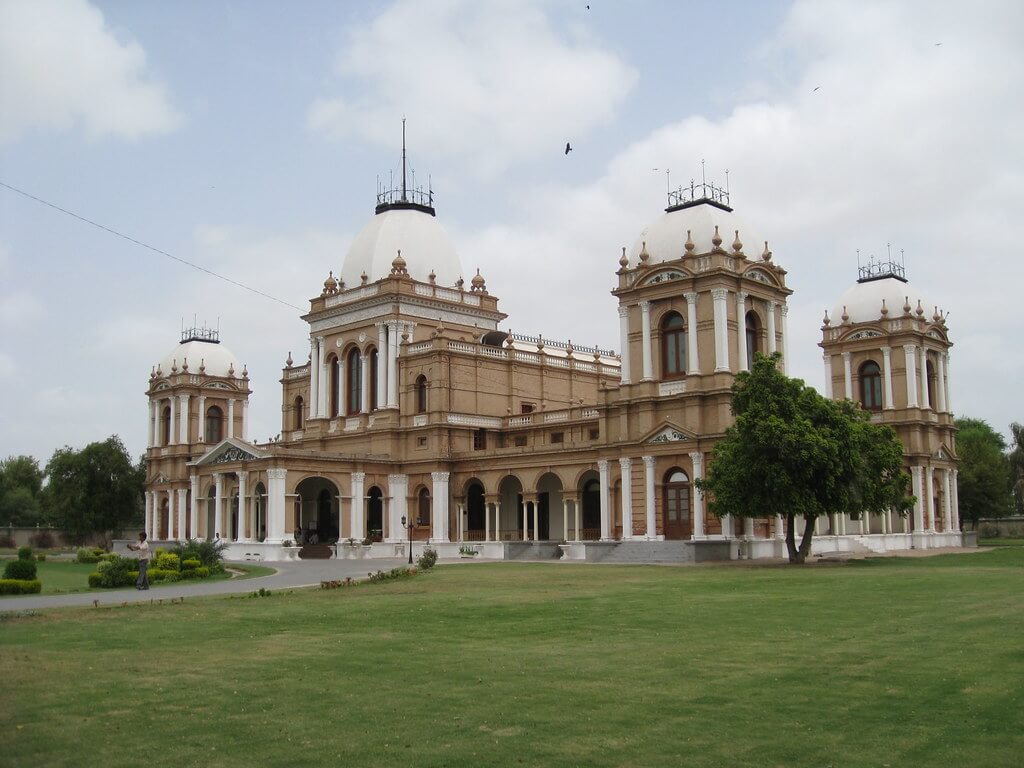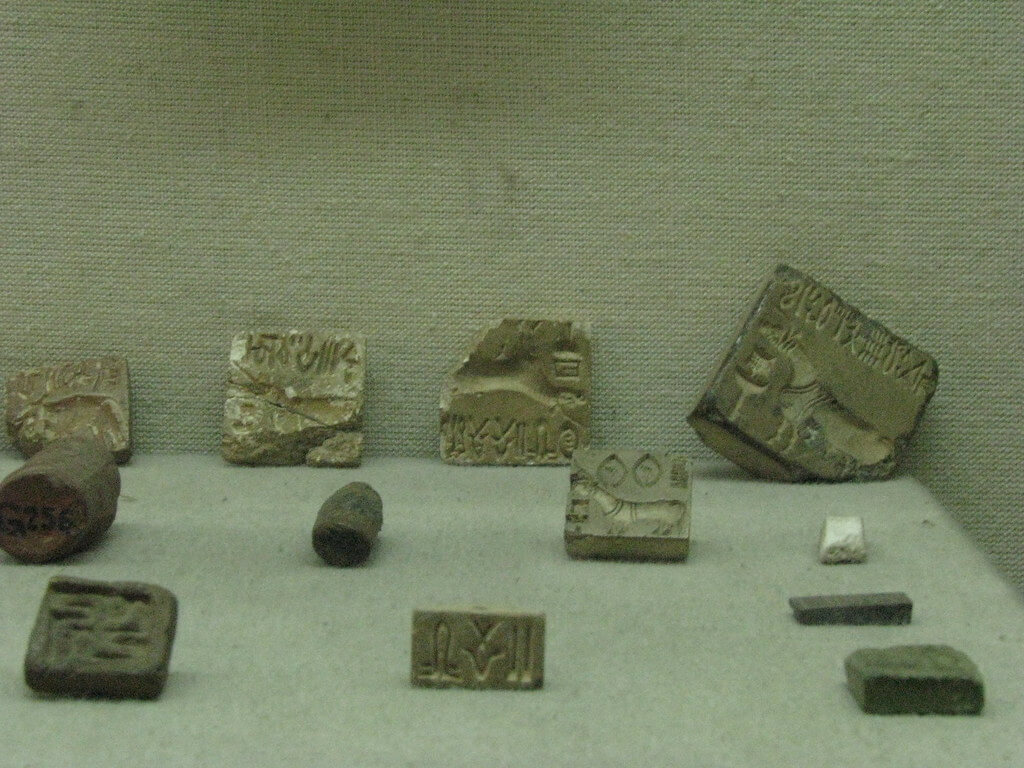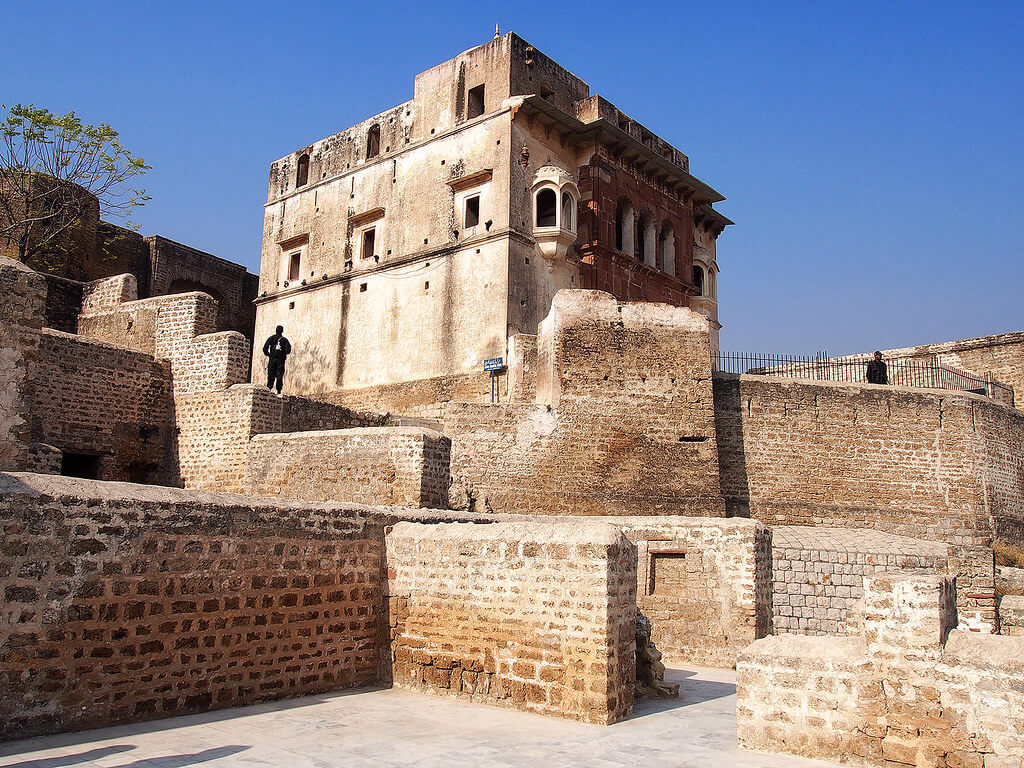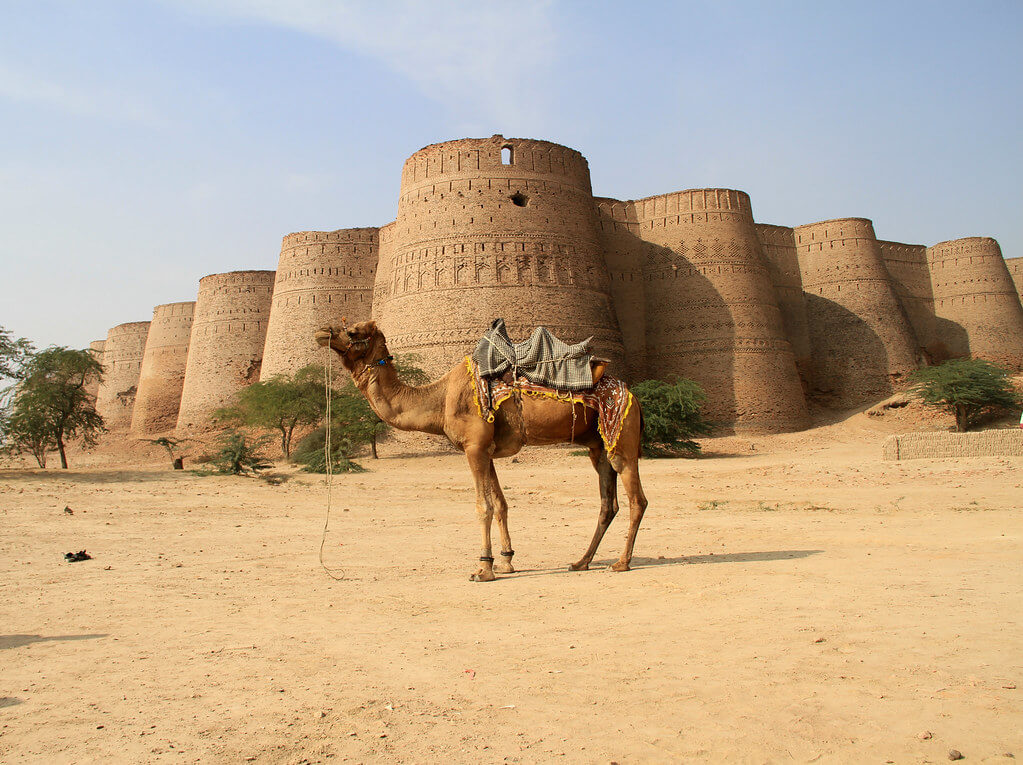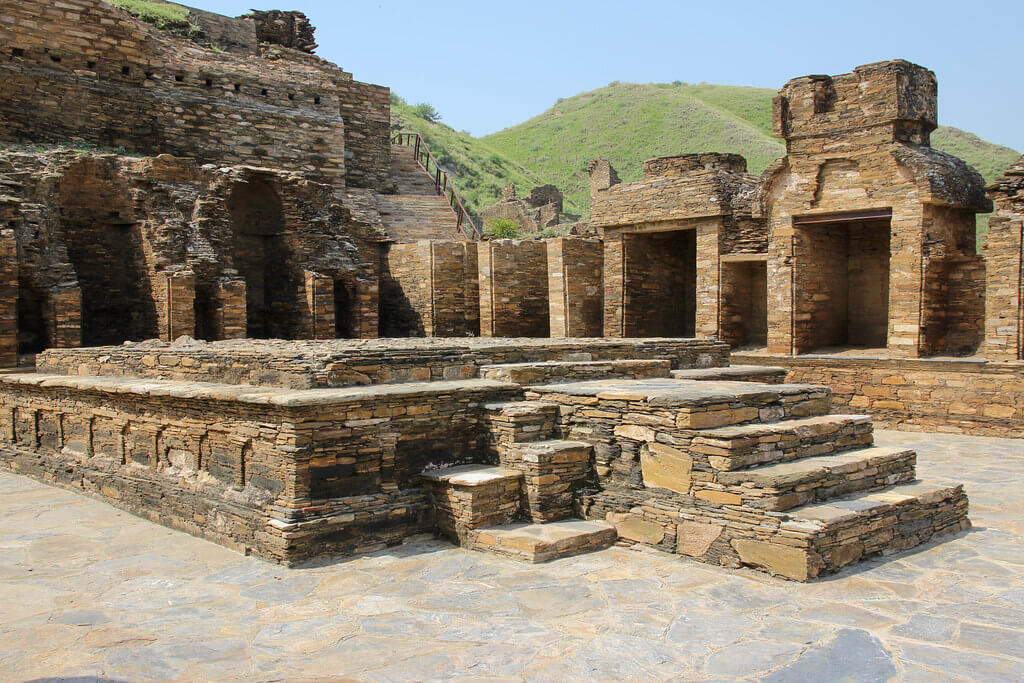Top Historical Sites in Pakistan
Historical Sites in Pakistan: Pakistan is a culturally rich country renowned for its natural beauty, traditions, cuisine, and, of course, historical sites. Pakistan boasts diverse landscapes, including lush green plains, mountain ranges, and deserts. Pakistan is a haven for those who enjoy exploring ancient and historical sites. The country was governed by multiple empires. Many renowned personalities also traveled through the country on their expeditions. In this article, we will highlight the best historical sites in Pakistan that you should not miss, especially if you have a passion for history.
Here is a list of Historical sites in Pakistan:
- Taxila
- Mohenjo Daro
- Rohtas Fort
- Lahore Fort and Shalimar Gardens
- Wazir Khan Mosque
- Tomb of Jahangir
- Noor Mahal
- Harappa
- Ranikot Fort
- Katas Raj Temples
- Derawar Fort
- Takht-i-Bahi
Taxila
Taxila, a city in Pakistan’s Punjab province, is a hub of history and culture. Its significance stems from its status as an ancient crossroads of civilization, where diverse cultures, faiths, and civilizations left their imprints. Today, it is a UNESCO World Heritage Site, welcoming people to study its rich history.
During the Achaemenid Empire, Taxila was a center of study and commerce, making it a destination for individuals seeking knowledge and commerce. Taxila’s ruins exhibit the blending of Persian, Greek, and Indian cultures, demonstrating the city’s status as a melting pot of ancient traditions. Taxila is home to well-preserved ruins, monastic complexes, and stupas that shed light on ancient religious and scholastic practices. The Dharmarajika Stupa and the Jaulian Monastery are two of the most prominent sites, providing glimpses into past spiritual and scholastic efforts.
Taxila’s significance is rooted in its status as an ancient center of learning and cultural confluence. It demonstrates the long-lasting impact of this historical crossroads on regional development. Exploring Taxila is an immersive trip into the heart of ancient history, where the echoes of many civilizations and the pursuit of knowledge are still heard today.
Mohenjo Daro
Mohenjo-Daro, one of Pakistan’s most important archaeological sites, provides a rare glimpse into the urban life of the ancient Indus Valley Civilization. It is located in Pakistan’s Sindh province and exemplifies the advanced culture and meticulous urban design that defined this ancient civilization.
One of the most notable aspects of Mohenjo-Daro is its well-planned layout. The city was divided into two parts: the Citadel and the Lower City, and the streets were laid out in a grid form, demonstrating a high level of urban planning. The comprehensive drainage system, which includes well-organized channels and sewage systems, demonstrates the fastidious attention to infrastructure. The archaeological excavations at Mohenjo-Daro have yielded a wealth of artifacts, including pottery, jewelry, seals, and figurines. Some of the most famous discoveries are seals with undeciphered lettering, which reveal tantalizing details about the ancient civilization’s writing system and symbols.
While the demise of the Indus Valley Civilization is a historical enigma, Mohenjo-Daro’s legacy lives on as a UNESCO World Heritage location and a location of global historical significance. It continues to intrigue archaeologists, historians, and travelers, offering a unique view into the urban sophistication of an ancient city that thrived almost four millennia ago. Join us as we discover the treasures of Mohenjo-Daro, a rich source of history and culture.
Rohtas Fort
Rohtas Fort, also known as Qila Rohtas, is a fortification near the city of Jhelum. It was built in the 16th century under the reign of Sher Shah Suri. The fort is claimed to be among the largest in the subcontinent. Fortunately, the fort was never attacked, so it still stands proudly today.
UNESCO designated Rohtas Fort as a World Heritage Site in 1997 for its excellent example of Muslim military architecture in Central and South Asia. Rohtas Fort comprises 70 hectares and is surrounded by 4 kilometers of walls reinforced by 68 bastion towers and 12 gates. The enormous fort could accommodate a force of up to 30,000 men. If you enjoy examining old towers and architecture, this fort is a must-visit.
Lahore Fort and Shalimar Gardens
Lahore Fort and Shalimar Gardens are noteworthy landmarks in Pakistan that tell us about the country’s history and importance. Lahore Fort is old, dating back to the 11th century, although it evolved dramatically in the 16th century under Emperor Akbar. It features outstanding attractions such as the Sheesh Mahal, a palace with many mirrors, and the Badshahi Mosque, a massive mosque.
Shalimar Gardens, located near the Lahore Fort, were built by Emperor Shah Jahan in the 17th century. This location is a stunning example of how the Mughals created gardens. Shalimar Gardens has a fascinating design with varied elevations and water channels, demonstrating how the Mughals combined beauty and use. Visiting Lahore Fort and Shalimar Gardens is like going back in time to observe how things used to be in Pakistan, and it’s a truly intriguing and beautiful spot in Lahore.
Wazir Khan Mosque
Mosques are very significant in Islam, hence many of the Mughal Empire’s mosques are still safe and rebuilt. Wazir Khan Mosque is another example of a Mughal-era mosque that holds historical significance in Pakistan.
Shah Jahan, the Mughal Empire’s creative ruler, erected this mosque during his reign. The Mughal Court’s head physician, Hakeem Ilam-ud-din Ansari, better known as Wazir Khan, gave the order to erect it. Following its completion, this mosque was named after the Viceroy and is currently known as the Wazir Khan Mosque. This stunning mosque is located around 260 meters west of the Delhi Gate in Lahore’s Walled City. Construction began in 1634 and was completed seven years later in 1641. And the results of this seven-year journey may be seen in the design and architecture. It is also Asia’s first building to feature 22 stores, known locally as Charsu Bazaar (Four Axis Bazaar).
It is one of Pakistan’s most magnificent mosques. And is said to have been influenced by the Begum Shahi Mosque, widely known as the “Mother of all Mosques”. Its courtyard measures about 160 feet by 130 feet and contains the grave of 14th-century Sufi saint Syed Muhammad Ishaq Gazruni, also known as Miran Badshah.
Wazir Khan Mosque is well-known for its beauty. It features art designs created throughout the mosque using gorgeous tiles. The entrance to the main prayer hall also features the Quran’s Surah Al-Baqara. The mosque’s interior is adorned with Mughal-period frescoes in a distinctive decorative style found in other mosques from that era. Even the mosque’s external brickwork has Persian-style tilework. In short, the entire mosque is loaded with breathtakingly beautiful patterns that can be admired for hours.
Tomb of Jahangir
The Tomb of Jahangir is a stunning example of Mughal architecture and history. This tomb was commissioned by Emperor Jahangir’s son, Shah Jahan, to celebrate the fourth Mughal ruler’s legacy. The mausoleum, built in 1637, is known for its fine craftsmanship and Persian-inspired design. It is a magnificent example of Mughal workmanship, built of red sandstone and decorated with marble inlays.
The mausoleum’s four minarets and huge entrance gate enhance its majesty. Inside, Jahangir’s white marble sarcophagus is a stunning focal point. The surrounding Charbagh garden, separated into four quadrants, is designed in the traditional Islamic paradise garden style. The Tomb of Jahangir is more than just a historical edifice; it is a cultural treasure that reflects the luxury and architectural brilliance of the Mughal period.
Noor Mahal
Another historical site in Pakistan is Noor Mahal, also known as Noor Palace, which is located in the city of Bahawalpur. Nawab Adnan Abbasi IV constructed a wonderful edifice. It is generally stated that he built it for her wife and intended it to be their family home, but she only stayed for one night and departed forever after discovering that Basti Maluk Shah’s graveyard was directly next to the palace.
This palace is reported to have cost 1.2 million, which is equivalent to approximately 8.1 million USD today. This palace is now run by the Pakistani Army and serves as a state guest residence and tourist attraction.
The Noor palace has 44,600 square feet and contains 32 rooms, 14 of which are located in the basement. Its 6 verandas and 5 domes are finely ornamented and depict the Corinthian style of architecture. In addition to the Corinthian form, the building incorporates an Islamic architectural style.
Noor Mahal is also packed with items utilized by Nawab. Its furniture is shipped from England and Italy. Its courtyard features a wall covered in fictional photos of Nawab himself. However, just one of these photos is true.
Harappa
Harappa is another archaeological site in Punjab, approximately 24 kilometers (15 miles) west of Sahiwal. The place was named after a settlement on the Ravi River’s bank. It is one of the top locations to visit in Pakistan. Harappa’s modern settlement is less than one km (0.62 miles) from the historic site.
The ruins contain items going back to the Bronze Age. According to estimates, the city has 23,500 citizens and covers approximately 150 hectares (370 acres). The Harappan Civilization originated in cultures such as Mehrgarh around 6000 BC. Harappa and Mohenjo Daro were developed along the Indus River Valley around 2600 BC.
Harappan civilization was quite modern. They had their writing system, city centers, and a diverse social and economic framework. The Harappans were also traders, and they conducted trade with ancient Mesopotamia. Cotton textiles and agricultural items were the principal trade goods. You can also visit the Harappa Museum to see the ancient treasures.
Ranikot Fort
Ranikot Fort, commonly known as The Great Wall of Sindh, is located near Jamshoro District, 260 kilometers from Karachi. Full of ancient history and culture, this fort is believed to be Pakistan’s largest fort and is not a well-known destination for tourists, giving you the advantage of having the place to yourself to explore as much as you want and spend some time at the blablabla lake near the fort, surrounded by the beautiful plains of the Indus Valley.
The Ranikot Fort’s original history and architects are unknown, but its distinct yet similar design has earned it the nickname The Great Wall of Sindh due to its likeness to China’s Great Wall, making it one-of-a-kind.
Katas Raj Temples
The Katas Raj Temples are located on Kalar Kahar Road. It is around 24.5 kilometers away from the Kalar Kahar Motorway interchange. The Hindu temples are supposed to have been built in the seventh century or earlier.
Katas consists of various samples. Walkways connect these temples. The temple complex is encircled by a pond, which enhances its splendor. The pond is named Katas, and Hindus view it as sacred. A beautiful view of the Katas Raj temples near Kalar Kahar. The great epic Mahabharata mentions these temples, and Guru Nanak, the founder of the Sikh religion, frequently visited the Katas Raj Temples. The Katas Raj temples are open from 9 a.m. to 5 p.m. and do not charge an entry fee.
Derawar Fort
A visit to the Derawar Fort takes three to four hours by four-wheel vehicle, but those who enjoy military architecture will not be disappointed. The awe-inspiring Derawar Fort, erected in 1733 and located kilometers into the Cholistan Desert, dominates the landscape with a unique ensemble of 40 huge, largely intact bastions positioned along the four walls.
The ramparts reach around 30 meters above ground, and the fort has a remarkable 1.5-kilometer radius. Visiting the fort’s interiors requires special authorization from local officials and may not be worth the effort: the enormous bastions are the true attraction of this remarkable structure. While on location, visitors may also want to check out the neighboring mosque, which is an almost perfect reproduction of the Moti Mosque outside Delhi’s Red Fort.
Takht-i-Bahi
The Indo-Parthian archaeological site Takht-i-Bahi, also known as the throne of the water spring, is near Mardan, Khyber-Pakhtunkhwa, Pakistan. There are many things to do in the city, but you should come here since it is one of Gandhara’s most magnificent Buddhist relics.
The Buddhist monastery was established in the first century CE and was used by Buddhists until the seventh century. Takht-i-Bahi was recognized as a World Heritage Site by UNESCO in 1980. The Takht Bahi complex has four sections: The first is the Stupa Court, which consists of a cluster of stupas in a central courtyard. The second half consists of meeting rooms and monastic chambers, which are composed of individual cells grouped around a courtyard.
Conclusion
These are some of Pakistan’s most well-known historical locations, where you can have a cultural experience. If you appreciate traveling and learning about history, you should visit these places. Every visit provides an immersive experience in cultural heritage, whether it is learning about the history of Mohenjo-Daro and Harappa or admiring the architectural grandeur of Lahore Fort. Whether traveling with friends or on your own, these destinations create a lasting connection to Pakistan’s rich spirituality and history.


